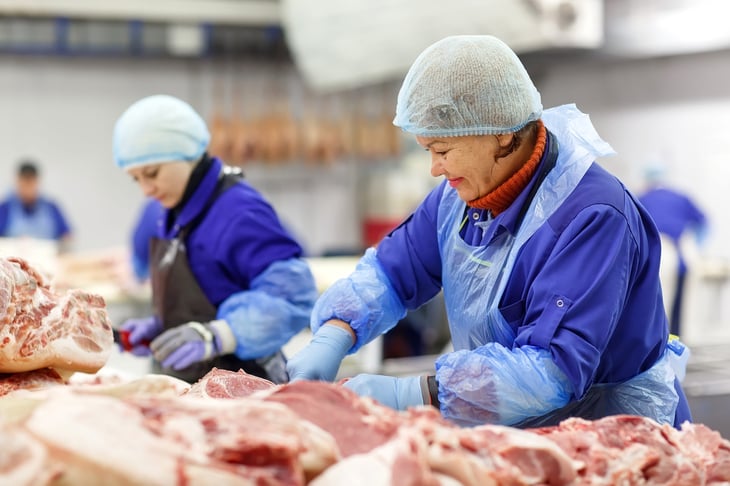
COVID-19 has disrupted almost all facets of American life — from jobs and schools to recreational activities. Our food chain hasn’t been spared.
As the pandemic spreads across the country, some grocery items have been in short supply. In some cases, that’s a result of shoppers hoarding products. Workers at plants getting sick and falling demand also are part of the equation.
Here are some common grocery items whose availability in stores has been disrupted as a result of the coronavirus pandemic.
1. Rice

People rushed to stock up on essentials at the start of the pandemic, and bags of rice — a stockpile staple — quickly disappeared from warehouse clubs, supermarkets and ethnic food stores. (White rice, for example, can last for decades if properly stored, as we detail in “10 Foods That Can Keep for Years.”)
In April, prices for the commodity hit a seven-year high.
The good news is that rice production in the U.S. is up 17% this year, meaning there should be enough to go around. It’s just a question of getting it to retailers’ shelves.
2. Potatoes

Consumers have been clearing stores of frozen french fries. Major potato processors have slashed their contracts with Washington and Oregon farmers by as much as 50%. That action is a result of decreased demand from restaurants, many of which have shut down, shifted to takeout or reduced their seating capacity.
Processors may be looking to avoid losses in case restaurant orders fail to bounce back this year. But reduced potato production may mean that consumers will continue to find frozen fries and hash browns hard to come by in the supermarket.
3. Eggs

The U.S. Department of Agriculture says there are plenty of eggs to meet immediate demand. That didn’t stop prices from rising and store shelves from emptying in the early part of the pandemic, however.
A spike in demand in March led to New York wholesale prices for in-shell eggs hitting a record high of $3.07 a dozen. Since then, demand has stabilized, and wholesale prices dropped to $1.97 per dozen in mid-April.
4. Flour

Flour is another product affected by a jump in demand during the pandemic.
When stay-at-home orders began rolling out across the country, people stocked up on pantry staples. The rush on flour not only cleared supermarket shelves but also resulted in a nearly 3% increase in the price of cereal and bakery products in April, according to U.S. Bureau of Labor Statistics data.
5. Meat

The U.S. doesn’t seem to have any shortage of cows and pigs. Nevertheless, meat has been in short supply at grocery stores these past few months.
COVID-19 outbreaks among workers at meat processing facilities caused some plant closures. Other plants are operating at a reduced capacity.
As a result, the number of cattle slaughtered in mid-April was down 22% from the previous year and the number of hogs processed had dropped 6%. Fewer animals being processed means fewer packages of beef and pork for sale in the store.
6. Yeast

The pandemic apparently has brought out the inner baker in many of us. Yeast sales in March through April were 410% higher than the year before.
A vice president of Fleischmann’s Yeast told USA Today that the company typically keeps a two-to-three-week buffer of inventory. That sold out almost immediately when pandemic-fueled buying began.
Fortunately, the company has plenty of raw materials to make more, so it’s just a matter of time before a ready supply of yeast is available again.
7. Dairy

With restaurants, offices and coffee shops closed, demand for dairy products such as cheese, yogurt and ice cream dried up early in the pandemic.
In April, the National Milk Producers Federation warned that the U.S. milk supply had exceeded demand by at least 10%. The Dairy Farmers of America estimated farmers were dumping upward of 3.7 million gallons of milk each day.
Despite all this, some grocery stores ran out of milk and limited sales as consumers stocked up and processors struggled to keep up with changes in the market.





Add a Comment
Our Policy: We welcome relevant and respectful comments in order to foster healthy and informative discussions. All other comments may be removed. Comments with links are automatically held for moderation.